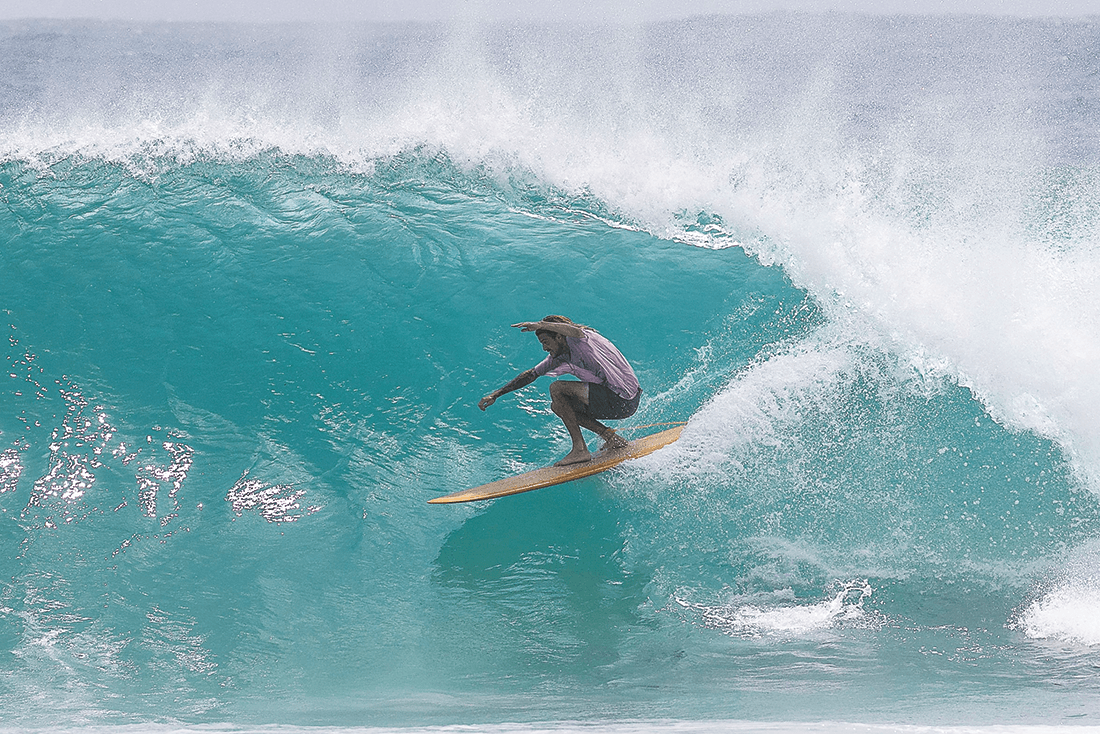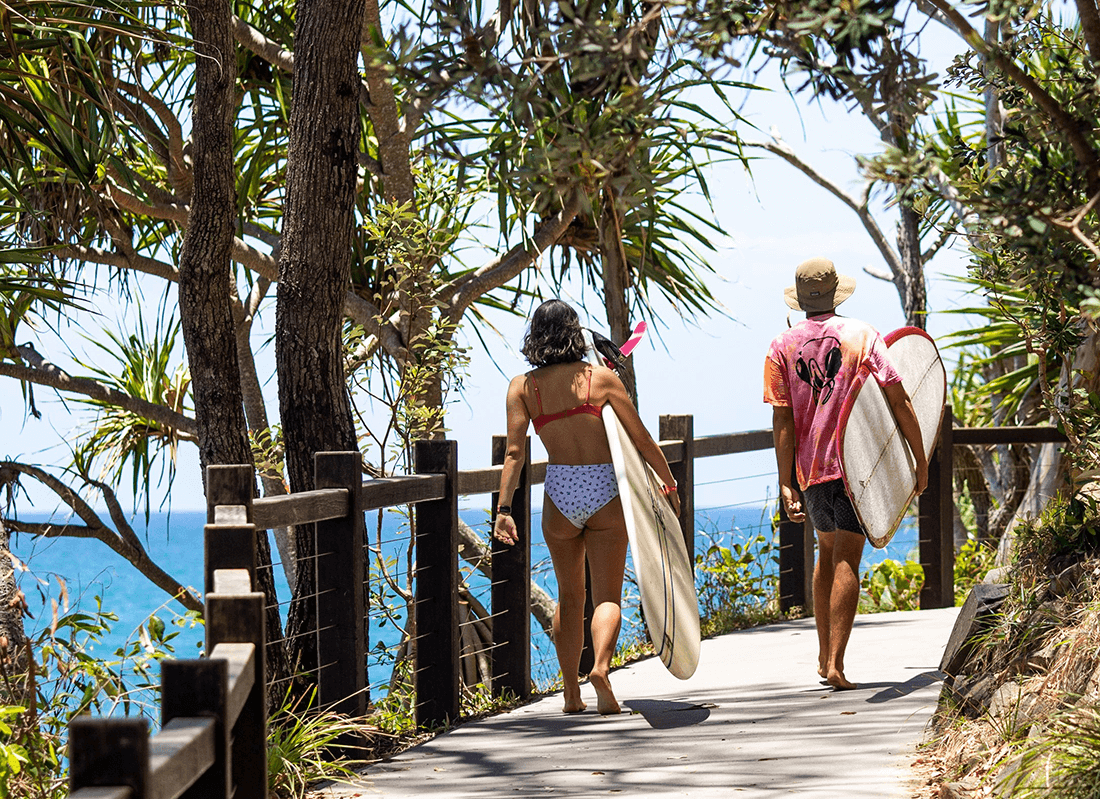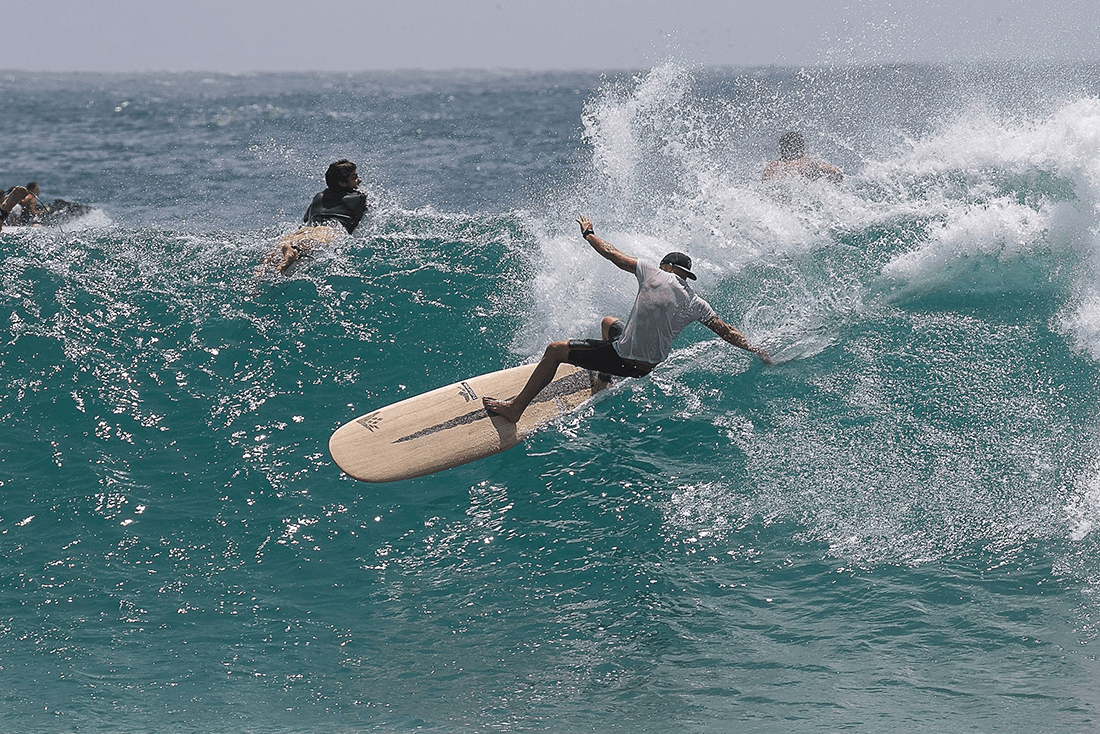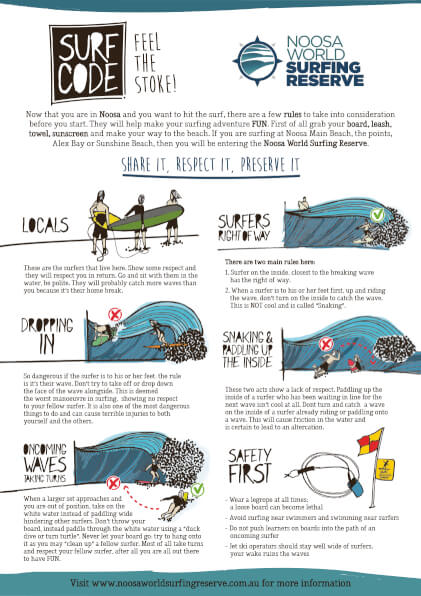
Surf’s Up in the Noosa World Surfing Reserve
Noosa World Surfing Reserve President Phil Jarratt recounts the journey that led to Noosa being named the 10th Surfing Reserve in the world – and shares his insights into his favourite surf spots.
After a four-year campaign fuelled by blood, sweat and tears, and a couple of disappointments along the way, it all came down to me waiting on an international phone call in the wee small hours of Friday 17 November, 2017. Finally the phone rang; I swooped on it and a voice from the other side of the world, in a tiny beach town called Punta de Lobos, miles from anywhere in Chile, whispered:
“You’ve got it!”
This was how I learned that the 19-member Vision Council of World Surfing Reserves (WSR) had voted overwhelmingly in favour of Noosa becoming the tenth World Surfing Reserve. WSR and its parent body, the Save The Waves Coalition, have their headquarters near Santa Cruz, California, but the reason the call came from Chile was that the announcement had been made at the annual Vision Council meeting at the dedication of the Punta de Lobos World Surfing Reserve.
I realised that we were joining an elite and diverse club, because the world’s best surf breaks are not always to be found in walking distance of the best of everything. Fortunately, our World Surfing Reserve is.
Finally, having had to wait our turn for official dedication, Noosa became the 10th World Surfing Reserve on 21 February, 2020.
As president of the stewardship council of the Noosa World Surfing Reserve, the question I get asked the most is, “What is a World Surfing Reserve?” Well, the Save The Waves Coalition launched the World Surfing Reserves concept in 2009, and it now serves as a global model for preserving wave breaks and their surrounding areas by recognizing and protecting the key environmental, cultural, economic and community attributes of surfing areas. World Surfing Reserves proactively identifies, designates and preserves outstanding waves, surf zones, and their surrounding environments around the world.
World Surfing Reserves have used their muscle to save iconic surf breaks from potentially destructive development and to lobby for better environmental protection.
The case Noosa presented, in our third and successful submission in 2017, was as an exemplar of best practice in coastal management and protection.
In other words, in our case the heavy lifting had already been done. Since the Noosa Parks Association went to bat to protect our headland from development back in 1962, generations of civic-minded citizens have created layers of protection. But we’re not perfect, and the Noosa World Surfing Reserve will add a layer of protection for our often-overlooked surf break assets, and the proposed State government protective legislation we are working at framing now will add another.

Now, let’s explore the unique aspects of Noosa’s beautiful breaks…
NORTH SUNSHINE
The dog-friendly section of North Sunshine Beach to the headland at the beginning of the National Park boundary is the southernmost part of the Noosa World Surfing Reserve. This beautiful 200-metre stretch of beach offers a variety of beach breaks that can hold swell up to overhead and some, plus it offers considerable protection from summer north-easterlies.
ALEXANDRIA BAY
Better known as an unofficial nude beach than as a surf break, “A-Bay” is actually an east-facing swell magnet that offers a variety of beach breaks when the rest of Noosa is flat. Headlands at either end offer some protection from south east trades and summer north-easterlies, making this a popular spot for shortboarders.
GRANITE BAY
The furthest out of Noosa’s righthand points, Granite lacks the perfect line-up of the others but picks up more swell, and can often produce fun overhead waves on a southerly swell that misses the inner bays.
TEA TREE BAY
From the line-up at idyllic Tea Tree Bay, you look back at an untouched vista of green, not a tourist development in sight. As if that wasn’t enough to justify the walk, the wave itself offers a little bit of everything, from a critical outside take-off behind an outcrop of rock to a fast-breaking middle section, followed by a long inside wall across the opaque shallows to the shore.

NATIONAL PARK AND BOILING POT
The most popular section of the wave, sometimes referred to as Gum Trees, is visible from the car park just inside the gates, with a popular picnic ground and the Noosa World Surfing Reserve monument adjacent. But for experts, the real wave begins another 200 metres up the line, directly below the lookout at Noosa Heads. This critical section, running across shallow rock ledge, is known as Boiling Pot.
When Noosa is receiving the full force of Coral Sea cyclonic depressions, this is where the most exciting ride of your life begins.
LITTLE COVE (JOHNSON’S)
Tucked beneath the tree-lined road leading to Noosa National Park, Little Cove (or Johnson’s, as it is known to surfers) can look deceptively gentle as rolling swells from the outer bays hit shallow water, but Johnno’s often produces the fastest, hollowest waves of all.
FIRST POINT
The first point visible at the eastern end of Main Beach is widely regarded as the jewel in Noosa’s crown, a fast-peeling sandbar right that offers barrels for the experts and soft-breaking sections inside for surfers who are slower to their feet. While many consider it one of the best longboard waves in the world, First Point can also offer dredging low tide tubes for agile shortboarders, with a perfect “ramp” for aerial manoeuvres on the inside section. Works best during the December to May wet season with Coral Sea swells fanned by south east trade winds.It plays host to the annual Noosa Festival of Surfing, the world’s largest longboard event.
WEST BEACH
The man-made beach between Noosa’s two rock groynes is very fickle, with sand-pumping often adding to the natural movement of sand with the prevailing currents. But three sand banks create reasonable quality beach breaks for most of the year, and usually bounce back fairly quickly after swell events.
THE RIVER MOUTH
Often overlooked by visiting surfers who fail to notice the far-off heads bobbing up and down in the break, the sand bars at the mouth of the Noosa River offer long, peeling lefts and rights.
www.noosaworldsurfingreserve.com.au

The Noosa World Surfing Reserve has devised a simple Surfer Code to reduce the chance of conflict and injury on our world class breaks. Follow the code and help:
SHARE. RESPECT. PRESERVE.
Phil’s Golden Rules
1. Don’t litter
2. Behave yourself
3. Show courtesy in the water
4. Overall, have respect for people and place



